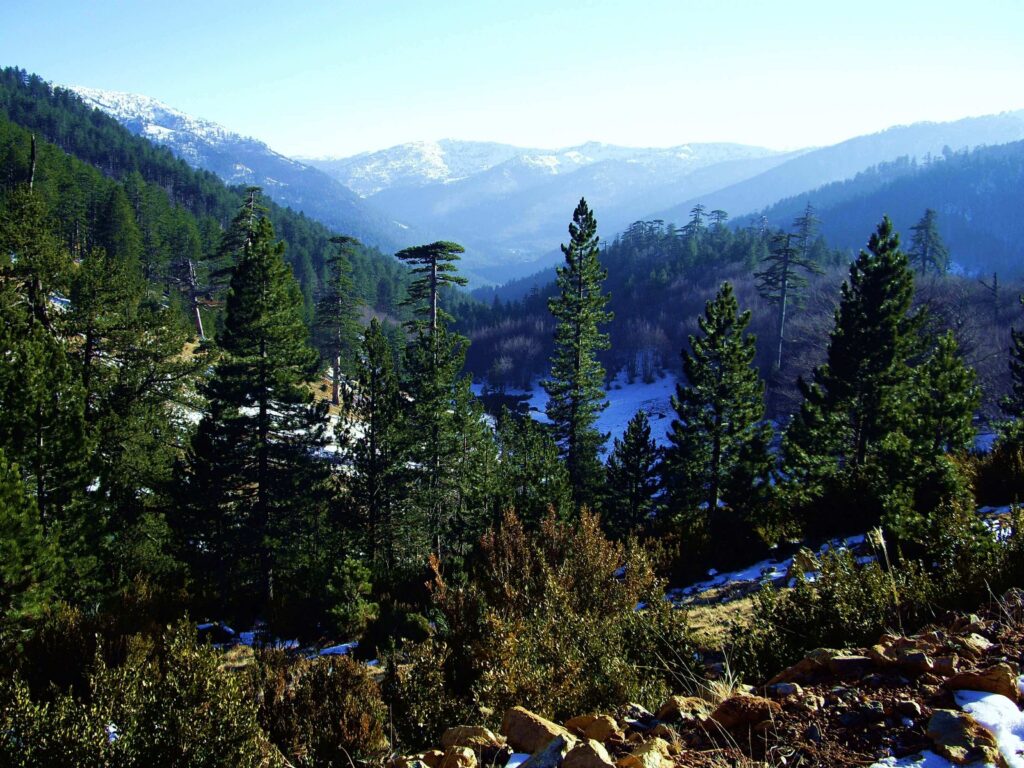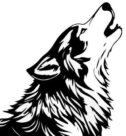
VALIA KALDA: ARK OF WILD LIFE
In the shade of straight black pine trees and the roots of proud rhododendrons, beside swollen streams that gush from everywhere gurgling water, the fresh footsteps of the bear and the wild boar, the rhythmic beat of the black woodpecker and the happy walk of the ash-tree-tailed woodpecker mark one of the last unspoiled pockets of wildlife of Greek nature. The five full months of the winter blockade are almost over…
It is only a matter of days. The mountain pass of Stavros, up there in Perivoli, will be freed from the last snowfalls that persist until the beginning of May, making the rickety road of the forest road leading to the core of the North Pindos National Park, the now well-known “Valia Kalda”, inaccessible. Thus the first spring visitors will now be able to enjoy the “Warm Valley”, which in our language, literally, means its Vlach name.
As for the isolation, it is something that this mountainous “apagio” has always experienced during the winter months, as it is enclosed, like a natural fortress, by peaks of high altitude (all 2000 meters and above) such as Avgo, Flegga, Baltses, Pyrostia, Kakopleyri, untouched by human presence. An isolation that, over time, the urbanization of the Greek countryside and the ever-increasing interventions in the mountainous area, proved to be a lifesaver for wildlife. Even until a few decades ago, only the majority of Vlachs – cattle farmers with their herds – used to come up here in summer. Subordinated to the processes of nature as their survival depended on them, they lived for centuries with the wildlife, showing a respect for it born out of an empirical understanding of the cycle of life and the interdependence of species.
Later, with the opening of the forest roads, new customs began to be “introduced” in Valia Kalda, along with new human activities such as that of the hiker, the naturalist, the excursionist, the camper. However, most of these temporary visitors, perhaps appreciating the wild beauty of the unspoilt landscape, behaved better here than in other mountainous places in our country. But even in the opposite case, Valia Kalda gifted by its own nature, will always be able to detoxify and self-feed. Due to the peculiar geomorphology of the terrain and the adverse weather conditions prevailing in the region, the “hibernation” of 5 or more months each year will always be possible for the Warm Valley and fortunately unattainable for the mass human approach – depending, of course, on how severe the winter will be.
From May onwards, the area is ready to receive visitors – estimated at about 3,000 people on average per year – who arrive here from all over Greece and Europe in search of the ultimate contact with the wild mountain nature. Before you decide to visit this place, learn to treat the forest with respect. If you are patient, Valia Calda will reward you. The fleeting passage of the brown bear behind the dark clumps of black bears, the crawling of the otter before it dives into the clear waters of the Akrudorema, the newborn wild boars that are grazing voraciously in a clearing, are unforgettable images that only you will have seen and unique moments that only you will have experienced, are precious gifts that only you will have generously given you.
But you will also remember the smell of it, emerging from the damp soil, the beautiful crocuses that the warmth of spring scatters all around, the colourful butterflies that you will chase endlessly from flower to flower, you will never forget anything, never… She is a witch of nature, Valia Calda, who will seduce you with her silent beauty and a part of you will always stay there, with her…
A Great Habitat
Valia Kalda is unique as it is one of the most important habitats of the brown bear (Ursus arctos). Some of the most dominant species of the Greek fauna, such as the wolf (Canis lupus), the wild goat (Rupicapra rupicapra balcanica), the otter (Lutra lutra), the wild cat (Felis sylvestris), the deer (Capreolus capreolus), the wild boar (Sus scrofa), live and breed in this protected ecosystem.
The place is an important habitat for large birds of prey such as the golden eagle (Aguila chrysaetos), the snake eagle (Cir-caetus gallicus), the cross-billed eagle (Hieraetus pennatus), the peregrine falcon (Falco pereginus), the golden eagle (Falco biarmicus) and numerous smaller species, insects, amphibians, reptiles and rare mushroom species that make up the diversity and uniqueness of the ecosystem. Trout (Salmo trutta) also live and breed in relatively healthy populations in Arkoudorema and Aoos.
From a scientific point of view, the presence of about sixty individuals of Red Pine is remarkable as they are found at the southernmost point of their distribution in Greece. The beauty of the valley touches every person who visits it to the extent that they can feel, understand and learn from the magic of nature, which is why its preservation and protection is so valuable.
North Pindos National Park
The wider area of the North Pindos National Park is divided between Epirus (Ioannina Prefecture) and Western Macedonia (Grevena Prefecture). Most of Valia Kalda, which is classified as one of the three “Nature Protection Areas – Zone I” (considered the core of absolute protection) is administratively under the Prefecture of Grevena. The place name Valia Kalda is Vlach and means ‘Warm Valley’ in the local language. The average altitude of the valley is 1 400 metres, with only minor variations. All around it, the mountains of Pindos rise like a wall of God. The area is crossed by two streams, ‘The Warm River’ and the ‘Saliatoura’ stream, which join to form the ‘Arkoudorema’.
In 1966, Royal Decree 487 established the legal framework of the North Pindos National Park with the aim of preserving its rich fauna and flora. On 31-5-2005, the “North Pindos – Valia Kalda” and “Viko/Aou” National Parks were unified by a joint ministerial decision, while the boundaries of the now unified “North Pindos National Park” were defined.
Its creation is aimed at the protection, conservation and integrated management of the nature and landscape of the area, which is considered a natural heritage and a valuable national natural resource. In particular, it seeks to conserve and manage the habitats and rare species of flora and fauna found in the area and to establish procedures and measures to ensure the harmonious coexistence of man and nature in the context of sustainable development. It is a park of truly gigantic dimensions by Greek standards, occupying a large part of the prefectures of Ioannina and Grevena and generally encompassing an area defined between Metsovo, Samarina, Konitsa and Zagorochoria.
Of course, as we live in 21st century Greece, we all know that the times of innocence for Greek nature are irreversibly over. The environment, even if it is formally protected within the strict framework of a National Park, is under intense anthropogenic pressure and the vigilance of all of us must be constant and determined if we want to pass on to our children at least what of this beautiful country was bequeathed to us by our elders.
